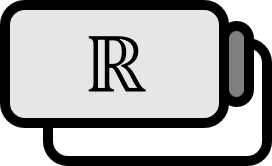Properties of Converging Real Sequences
Theorem 1[^1]
Let $\left\{ s_{n} \right\}$, $\left\{ t_{n} \right\}$ be sequences of real (or complex) numbers and assume that $\lim \limits_{n\to\infty} s_{n}=s$, $\lim\limits_{n\to\infty}t_{n}=t$. Then
(a) $\lim \limits_{n\to\infty}(s_{n}+t_{n})=s+t$
(b) $\forall c \in \mathbb{C},\quad\lim \limits_{n\to\infty} cs_{n}=cs \quad \text{and} \quad \lim \limits_{n\to\infty} (c+s_{n})=c+s$
(c) $\lim \limits_{n\to\infty} s_{n}t_{n}=st$
(d) $\forall s_{n}\ne 0,s\ne0,\quad \lim \limits_{n\to\infty}\frac{1}{s_{n}}=\frac{1}{s}$
Of course, this can be extended to $\mathbb{R}^{k}$ as well. See Theorem 2 for a deeper look.
Proof
(a)
Given any positive number $\varepsilon>0$, there exist two positive numbers $N_{1}$, $N_{2}$ satisfying the following condition.
$$ \begin{align*} n \ge N_{1} &\implies \left|s_{n}-s \right|<\frac{\varepsilon}{2} \\ n \ge N_{2} & \implies \left|t_{n}-t \right|<\frac{\varepsilon}{2} \end{align*} $$
Now let’s assume that $N=\max(N_{1},N_{2})$. For $n \ge N$,
$$ \left| (s_{n}+t_{n})-(s+t) \right| \le\left| s_{n}-s \right|+\left| t_{n} -t\right|<\varepsilon $$
Therefore,
$$ \lim \limits_{n\to\infty} (s_{n}+t_{n})=s+t $$
■
(b)
This trivially holds due to the validity of (a).
■
$(c)$
Given any positive number $\varepsilon >0$, there exist two positive numbers $N_{1}$, $N_{2}$ that satisfy the following equation.
$$ \begin{align*} n \ge N_{1} &\implies \left|s_{n}-s \right|<\sqrt{\varepsilon} \\ n \ge N_{2} & \implies \left|t_{n}-t \right|< \sqrt{\varepsilon} \end{align*} $$
Now let’s assume that $N=\max (N_{1},N_{2})$. Therefore,
$$ n \ge N \implies \left| (s_{n}-s) (t_{n}-t) \right|<\varepsilon $$
Hence,
$$ \begin{equation} \lim \limits_{n\to\infty} (s_{n}-s)(t_{n}-t)=0 \label{eq1} \end{equation} $$
At this moment,
$$ s_{n}t_{n}-st=(s_{n} -s)(t_{n}-t)+s(t_{n}-t)+t(s_{n}-s) $$
Applying (a), (b), and $\eqref{eq1}$ to the above equation gives
$$ \begin{align*} \lim \limits_{n\to\infty} (s_{n}t_{n}-st)&=\lim \limits_{n\to\infty}(s_{n}-s)(t_{n}-t)+\lim \limits_{n\to\infty}s(t_{n}-t)+\lim \limits_{n\to\infty}t(s_{n}-s) \\ &= 0+0+ 0 \\ &= 0 \end{align*} $$
Therefore,
$$ \lim \limits_{n\to\infty} s_{n}t_{n}=st $$
■
(d)
Given the assumption of $\lim \limits_{n\to\infty} s_{n}=s$, one can choose a positive number $m$ that satisfies the following equation.
$$ \forall n\ge m,\quad \left|s_{n}-s \right| < \frac{1}{2}\left|s \right| $$
Since $\left|s \right|-\left|s_{n} \right| \le \left|s_{n}-s \right|$, from the above equation, we can derive the following equation.
$$ \begin{equation} \forall n \ge m,\quad \left|s_{n} \right|>\frac{1}{2}\left|s \right| \label{eq2} \end{equation} $$
Now, given any positive number $\varepsilon>0$, there exists a $N$ satisfying the equation below.
$$ \begin{equation} n \ge N \implies \left|s_{n}-s \right| < \frac{1}{2}\left|s \right|^{2}\varepsilon \label{eq3} \end{equation} $$
Therefore, by $\eqref{eq2}$ and $\eqref{eq3}$, for $n \ge N$,
$$ \left|\frac{1}{s_{n}}-\frac{1}{s} \right|=\left|\frac{s_{n}-s}{s_{n}s} \right|<\frac{2}{\left|s \right|^{2}}\left|s_{n}-s \right|<\varepsilon $$
thus,
$$ \lim \limits_{n\to\infty}\frac{1}{s_{n}}=\frac{1}{s} $$
■
